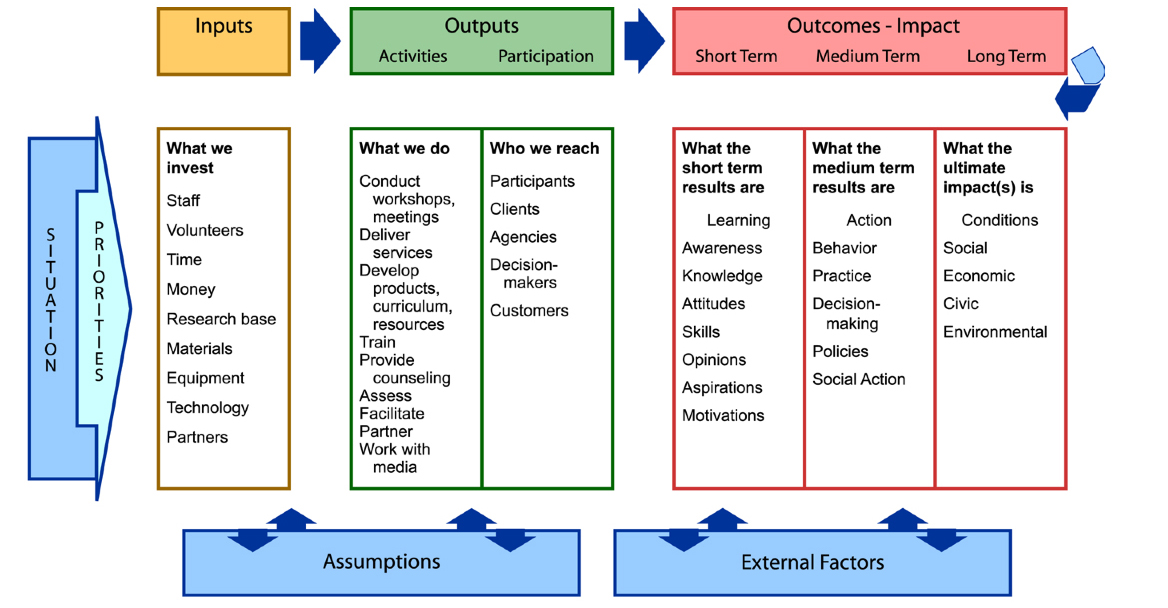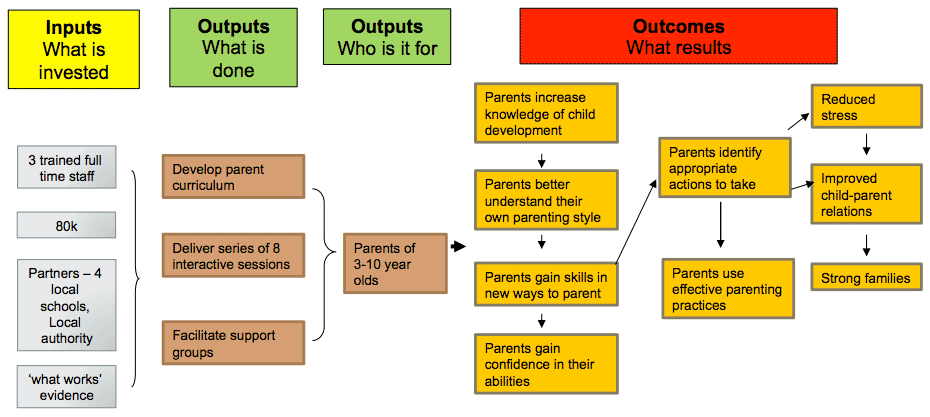The 5 Step Approach to Evaluation: Designing and Evaluating Interventions to Reduce Reoffending SUMMARY
A summary (updated) version of 5 step evaluation guidance describing how to use the 5 step approach to design and evaluate criminal justice interventions.
Step 3 : Draw a logic model
Show how the project should work
Clear links between resources, activities and outcomes
What are logic models? / Who can use them?
What are logic models?
Logic models are step-by-step diagrams which simply show:
- What you're hoping to achieve in the long run (long-term outcomes)
- The process (short and medium term outcomes) through which your planned activities can be expected to lead to long-term aims.
- What resources will you need to do this (inputs)
Who can use them?
Anyone who is planning activities with particular aims in mind can benefit from using a logic model. This includes funders and commissioners, who might use them to plan how to assess applications and allocate funds in pursuit of their overall aims, as well as organisations and individuals planning behaviour change projects or services.
A Logic Model Template TO USE

This blank template can be found here
http://www.uwex.edu/ces/pdande/evaluation/evallogicmodel.html
A project-level logic model
The following simple logic model shows how a project aimed at improving family relationships for people on bail, improve employability and reduce reoffending is expected to work. It is based on international evidence about 'what works' to reduce reoffending and on research which highlights the importance of promoting positive relationships between workers and service users. It shows clear links between activities and the expected outcomes, based on what research studies tells us.
This model is quite general so service providers should be a bit more detailed about the evidence they have used to design and deliver the intervention and also describe the content of activities in more detail.
Another project-level logic model can be found in chapter A parenting skills logic model and there are more examples in the pack entitled 'The 5-step Approach to Evaluation: Designing and Evaluating Behaviour Change Interventions'.
A simple supervised bail logic model
| Inputs |
Outputs |
Outcomes |
|||
|---|---|---|---|---|---|
| Activities |
Participation |
Short‑term |
Medium‑term |
Long‑term |
|
| Bail workers (criminal justice social work/ third sector) Bail offices Time Money Partners: Judiciary Evidence (support) |
Suitable candidates for SB identified and given SB Bail workers meet with bailees 2-4 times per week for an hour Bail workers assess bailee needs and signpost where appropriate |
Bailees and potential bailees |
Bailees feel they get on well with bail workers Bailees feel motivated to attend meetings and comply with conditions Bailees feel motivated to take up signposted services Bailees attitudes to their behaviour and aspirations change |
Bailees attend meetings Bailees comply with conditions Bailees engage with signposted services Bailees change behaviour and aspirations Compliance leads to community sentence Bailees stay in the community and out of prison |
Enhanced bailee relationships with family Reduced reoffending by bailees Enhanced employability |
A parenting skills logic model
Situation: A recent parent survey in primary schools showed that 76% of parents of 3-10 year olds had struggled with dealing with tantrums in the last year. 59% of those parents said they felt 'stressed'.

Source: University of Wisconsin
Contact
There is a problem
Thanks for your feedback